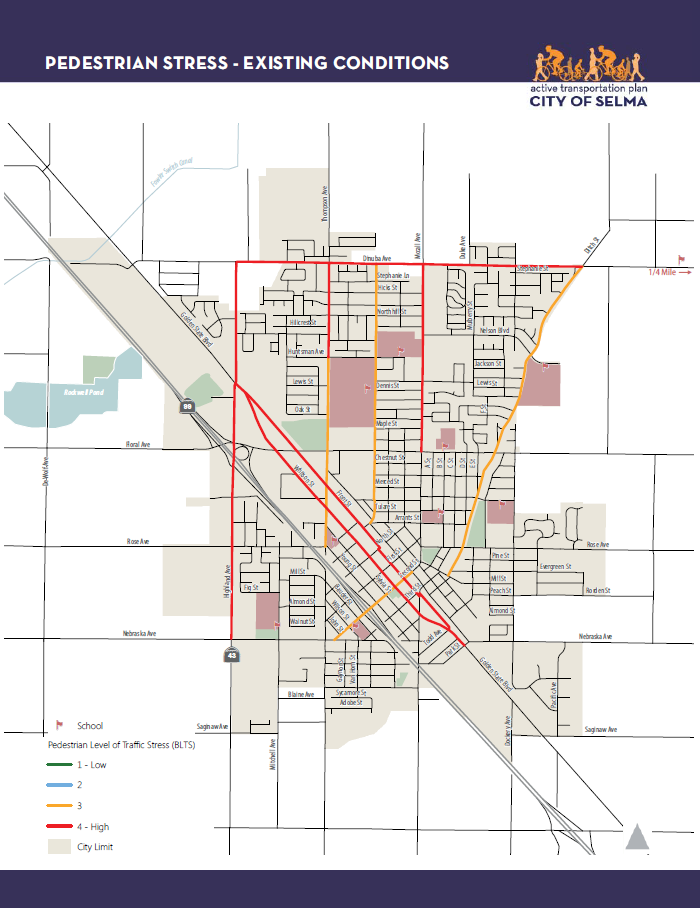WSDOT uses Level of Pedestrian Stress to measure pedestrian comfort and exposure to traffic.
| PERFORMANCE MEASURE | PERFORMANCE METRICS | PROJECT TASKS | APPROPRIATE CONTEXTS |
|---|---|---|---|
| Pedestrian Quality of Service | Level of pedestrian stress | Refine Solutions | Urban Core Town/Urban Suburban Rural* |
| *sometimes applicable, refer to metric description for more detail | |||
- What? Pedestrian stress on a facility, as measured by the extent to which pedestrians are walking near high-volume and high-speed auto traffic.
- Why? People are more likely to walk in places where automobile traffic is slow and where pedestrians are provided with dedicated facilities, including sidewalks and crosswalks.
- Where? Where pedestrian facilities are present or are included in project alternatives.
- How? Pedestrian facilities should meet WSDOT facility standards as defined in the WSDOT Design Manual.
| METRIC | SOURCES | DATA | ANALYSIS SOFTWARE | CALCULATION | RESOURCES |
|---|---|---|---|---|---|
| Level of pedestrian stress | WSDOT Design Manual WSDOT Active Transportation Plan (forthcoming) | Pedestrian and roadway network shapefile data, including sidewalk widths, sidewalk quality, driveway frequency, crosswalk frequency, traffic volumes, heavy vehicle volumes travel lanes, and traffic speeds | Sugar Access GIS program Spreadsheet program | Level of pedestrian stress (multivariable equation) | WSDOT Design Manual |
Case Study: Selma (CA) Active Transportation Plan (2018)
Projects that consider active transportation modes (i.e. walking and bicycling) often rely on level of stress to understand how the project serves pedestrians. Pedestrian level of stress was used by the Selma Active Transportation Plan (2018) to assess improvement needs and address pedestrian connectivity issues. The plan assesses existing traffic stress for pedestrians on priority corridors in the City. Most of the arterial and collector streets have a high level of traffic stress (LTS 3 or LTS 4) as shown in the map below. Important contributors to high stress scores include high traffic speeds, missing sidewalks, and high truck volumes. The report acknowledges that reducing pedestrian level of traffic stress is challenging in areas where sidewalks are already built and there is limited additional right-of-way, but that enhancements should be provided where feasible.
To learn more, please see the final report for the Selma Active Transportation Plan.

